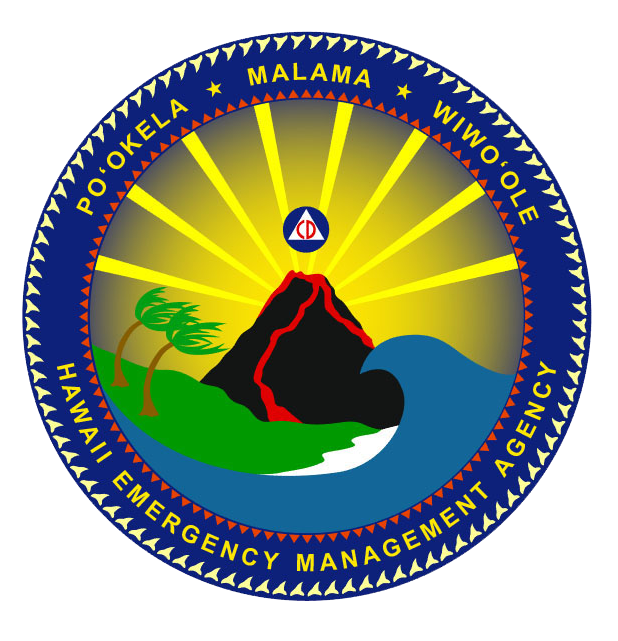The ‘Ua’u is Nesting
Posted on Dec 9, 2016 in Information and News Releases
A young ʻuaʻu stretches its wings in preparation for its first flight out to sea. The ʻuaʻu, or Hawaiian petrel, is a federally endangered native seabird that nests at high elevations on Mauna Loa volcano. To learn more about the ‘ua’u visit the US Geological Survey’s Volcano Watch at
https://hvo.wr.usgs.gov/volcanowatch/view.php?id=464
High on the slopes of Mauna Loa, the largest active volcano on Earth, a unique Hawaiian seabird struggles for survival. The ʻuaʻu, or Hawaiian petrel (Pterodroma sandwichensis), spends most of its life at sea, returning to Mauna Loa only to nest and rear young in high-elevation, underground burrows.
It is estimated that historic ʻuaʻu populations were likely in the hundreds of thousands to millions of birds, with nests ranging from sea level to high mountain slopes throughout the main Hawaiian Islands. Today, the ʻuaʻu still occurs on several islands, but has become one of the most endangered seabirds in Hawaii.
Many threats have contributed to the decline of this endemic species, including historic hunting by humans, non-native predators, and habitat loss. More recently, inflight collisions with structures and groundings caused by disorienting artificial lights have taken a toll on the species.
On the Island of Hawaiʻi, ʻuaʻu once nested from the lowlands to the upper slopes of the volcanoes. They are now limited to high elevation sites on Mauna Loa and, possibly, steep cliffs on Kohala. Biologists have monitored remote nesting colonies on Mauna Loa for over two decades, and now estimate the population to be only 75 breeding pairs.
The somewhat mysterious life history of ʻuaʻu makes monitoring this species extremely challenging. ʻUaʻu are pelagic, spending much of their lives at sea, coming to land only for nesting. They forage in distant feeding areas—in some cases, as far north as the Aleutian Islands—and fly to and from nesting areas at night.
On Mauna Loa, ʻuaʻu nest in remote underground burrows that are so deep they can’t be seen. Biologists are incorporating new technologies, including remote cameras and satellite transmitters, to better understand the species.
ʻUaʻu belong to the taxonomic order Procelleriformes, as do albatrosses, shearwaters, and other petrel species. Like their relatives, ʻuaʻu are long-lived (30-plus years) and do not breed until 4–6 years of age. Once nesting begins, both parents take turns incubating a single egg for roughly two months.
After an ʻuaʻu egg hatches, the adults head out to sea to feed on squid and fish, with foraging trips lasting from several days to several weeks at a time. The chick stays in its burrow, often alone, and waits for its parents to return with food.
After about three months, the growing ʻuaʻu chick ventures out of the burrow to exercise its newly feathered wings. Within weeks, it fledges, or takes its first flight, directly out to sea.
ʻUaʻu face many dangers during their time on land. Because they have no natural defenses, both adults and chicks are easy prey for introduced animals like feral cats and mongooses.
ʻUaʻu are also at risk when flying between nest sites and the sea. Birds have collided with unexpected structures along flyways, such as wind turbines and power lines. Artificial lights casting an upward glow can disorient ʻuaʻu, causing them to land in unsafe areas, where they are susceptible to predators and cars, and where they may not be able to launch back into flight.
The impacts of additional threats to ʻuaʻu, such as climate change and marine plastics, are not yet fully understood.
Fortunately, government agencies, private organizations, utility companies, and landowners have joined forces to reduce threats to ʻuaʻu and other Hawaiian seabirds. Hawaiʻi Volcanoes National Park, with the help of several partners, recently completed a barrier fence to exclude cats from a key nesting area on Mauna Loa (https://youtu.be/m1MfyDbteVw). Collaborative conservation efforts, like this fence, are critical for the protection of ʻuaʻu and other sensitive species.
November is fledging season for ʻuaʻu on Mauna Loa. Island residents can play a role in helping these young birds reach the sea: Direct outdoor lights downward and shield the tops of lights to minimize disorientation of the birds as they fly between the mountain and the sea. Keep domestic cats inside or in outdoor enclosures, and avoid contributing to feral cat populations by preventing unwanted litters of kittens.
To report a grounded seabird in Hawaiʻi Volcanoes National Park, call park dispatch at (808) 985-6170. Outside the park, contact the Department of Land and Natural Resources Division of Forestry and Wildlife at (808) 974-4221.
